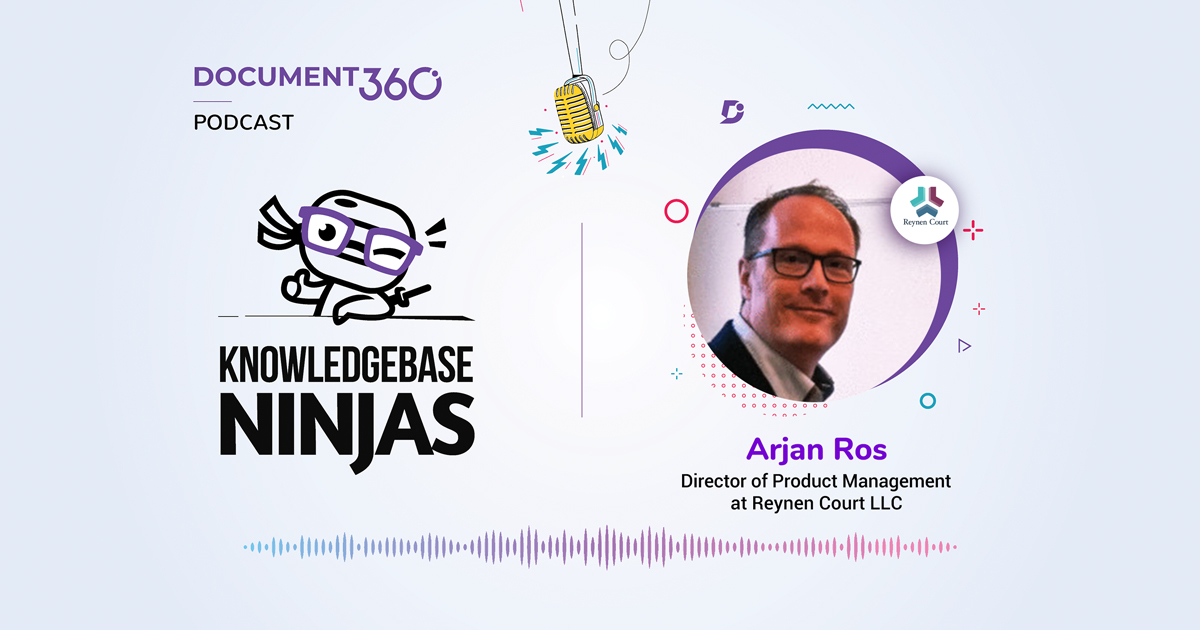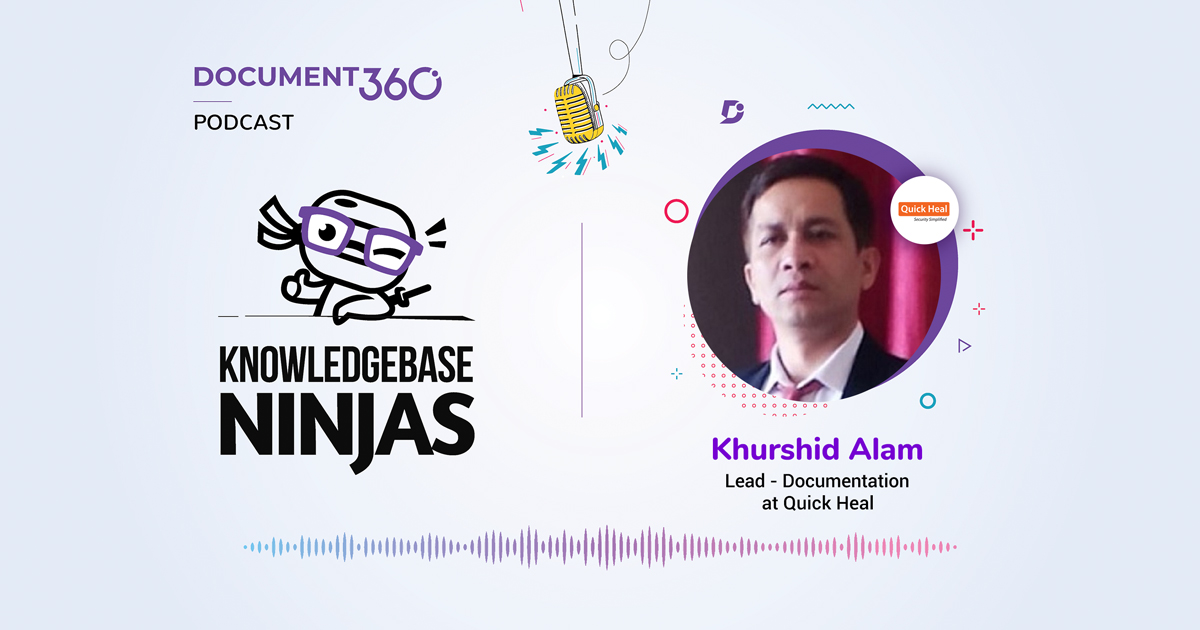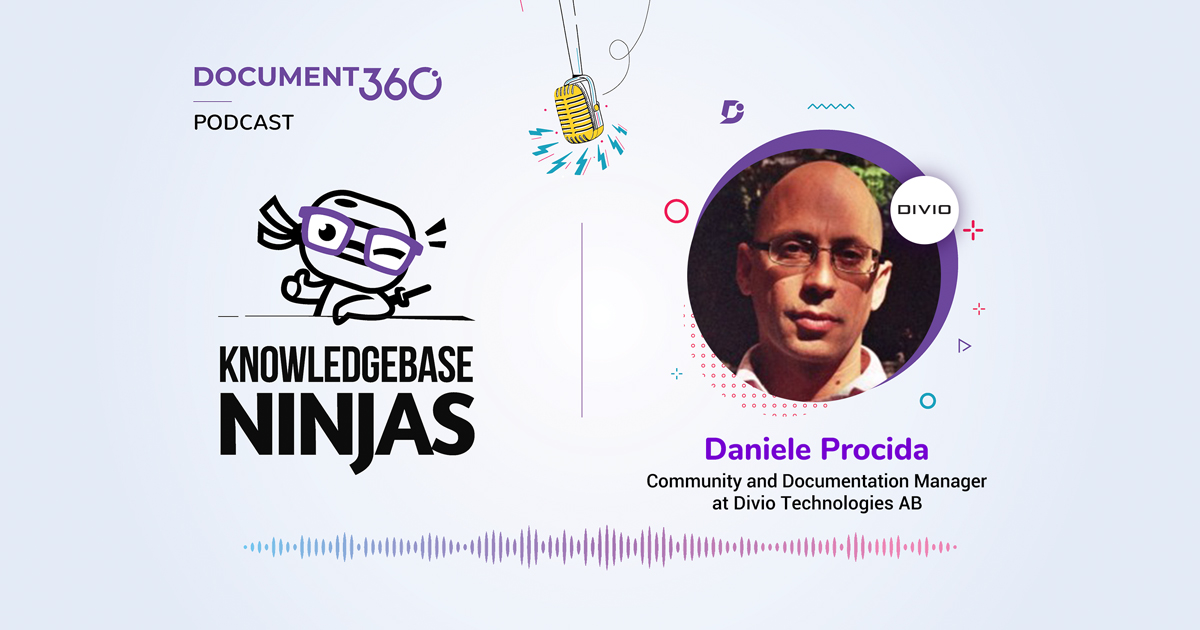Raj Kiran, Principal Technical Writer at OpenText joins us in this episode of Knowledgebase Ninjas to discuss how to create effective documentation.
Connect with Raj Kiran and view OpenText’s Knowledgebase here:
Key Takeaways:
Raj’s Journey into technical writing and documentation…
Ever since the start of Raj’s career, he has been involved in content creation. His career started off as a music journalist, he was writing short articles and blogs on various music scenes, back in the early 2000s. From there he moved into technical training, he was always fascinated by technology and the programming side of the industry. He started off working as a technical trainer, training people on computer hardware, usage & maintenance as well as training technical support staff.
Whilst he was training he used to look at the training materials such as booklets or manuals. He found that they were poorly put together and that there was no flow or direction to the content. He started working for a bunch of teams who were creating content for customers. Raj realized there was a whole new world out there when thinking about content and documentation creation.
He slowly heard about technical writing from a colleague who was also a trainer like Raj. In 2009 Raj never knew about the technical writing field. Raj conducted research about technical writing and found fellow technical writers and began talking to them. In 2010 he worked for Dell which is where he had his first taste of technical writing. He learnt how to write for different audiences as well as how to reuse content. He started writing content for hardware products, such as writing customer-facing content for gaming computers.
Raj found out that the technical writing and documentation scope between Hardware and Software is very vast, there is a variety of audiences that use software and hardware documentation. It is absolutely necessary to make sure that your documentation is well scoped, has an accurate amount of research and making sure to liaise with your development team before you even write a single word.
OpenText’s documentation process…
Each team in Opentext around the world has complete ownership of certain products from end to end. So every person in Raj’s team has complete ownership of one product, they work closely with other teams, to make sure that the documentation is delivered at the time the product is delivered to the customer.
They are constantly working with the engineering teams at an early stage of the process, this is to gain an understanding about what the product will look like, the various features that will come with it. They will then scope the amount of effort they will need to make the documentation, for example: Will they need illustrators? Or will they need a number of videos to explain the product?
The next stage is where they will have a 2-week sprint where the feature and product is being developed. So they liaise with the testers, developers, and engineers to see what they are working on and analyze that feature. You need to scope to see whether this will impact the documentation at all or whether it’s a small part that won’t affect the end documentation.
Raj’s team then starts building the documentation as the engineers are building the feature. At OpenText they have built up a ticketing process that helps Raj’s team with the planning and execution of accurate and effective documentation.
Raj’s most important factors when creating effective documentation…
The gathering of information is the most important factor in Raj’s eyes, because you have to be diligent and make sure that you’re removing irrelevant details, making sure the technical information is accurate, download that feature and running tests to make sure that its running as intended or review the UI and give the team feedback based on those tests. Conducting that research is the foundation for creating any effective documentation.
What impacts do AR & VR have on documentation?
Raj states that AR and VR will have a massive impact on documentation when dealing with hardware products. Raj continues this by saying when you need to set up your tv or a laptop people normally got to unboxing videos or research how to set it up, however, if the person only has to download and app and hold it up to the screen, then AR or VR is used on your phone to show you how to set it up and where to put the plug and cords in then this is a game changer.
Having AR and VR in the hardware industry will provide easy information on how to fix a troubleshoot or give you step by step instructions on how to remove or unscrew something to fix a problem.
Who has Raj learnt the most from throughout his career?
Raj has learned a lot from his mentor at Dell. He taught him how to focus on customer face instructions etc.The simpler you make the documentation the more effective it is.
Raj’s best documentation related resource…
Raj says that he has learnt alot from this most suggested resource: I’d Rather Be Writing. They discuss the future of documentation and technical writing. He also suggested another site called The Content Wrangler this focuses on UI, content and technical writing another great blog.
- I’d Rather Be Writing – Tom Johnson
- The Content Wrangler – Marcia Riefer Johnston
Subscribe To Knowledgebase Ninjas:

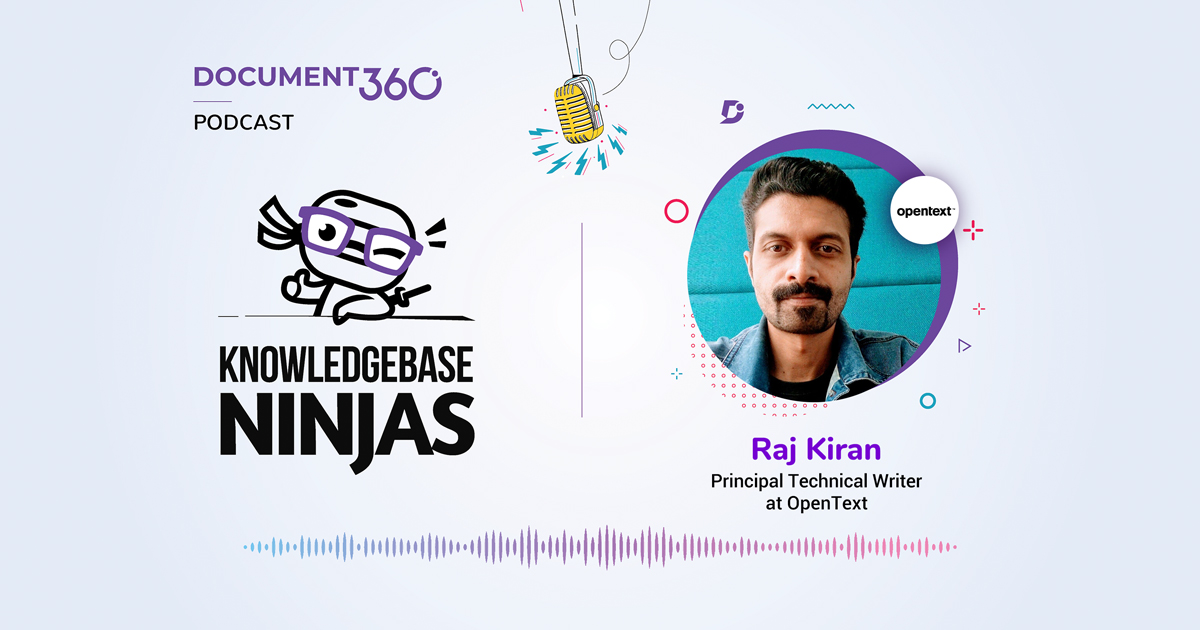
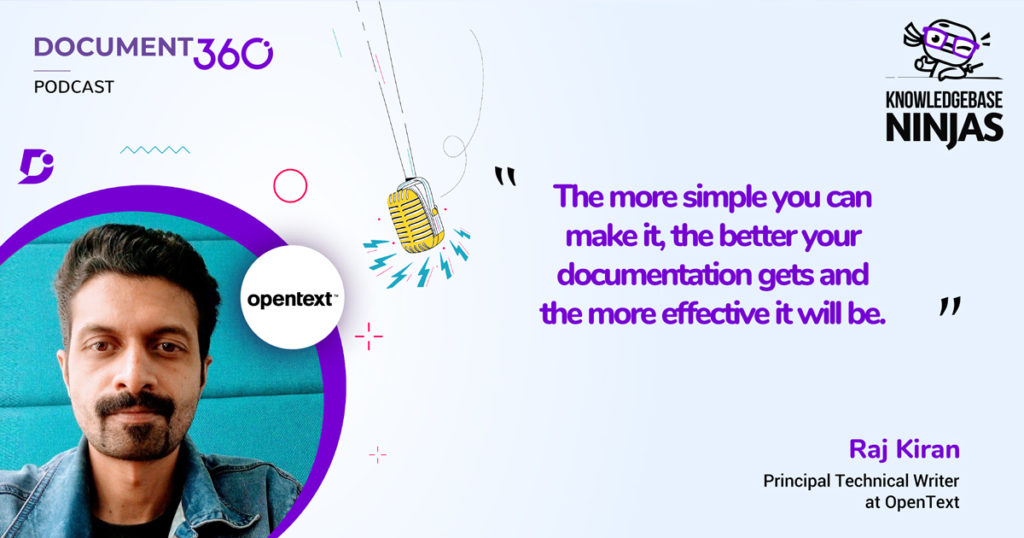
 –
– 